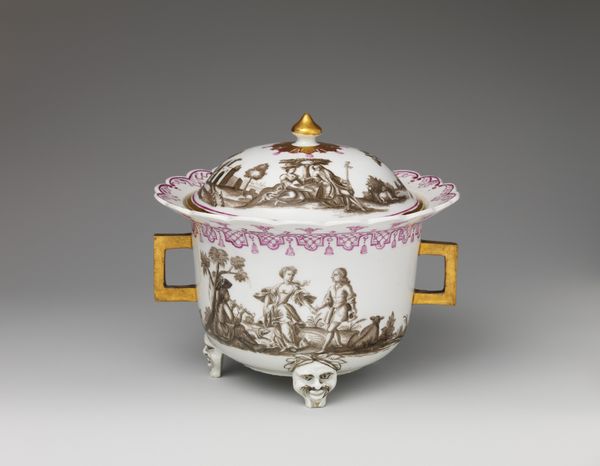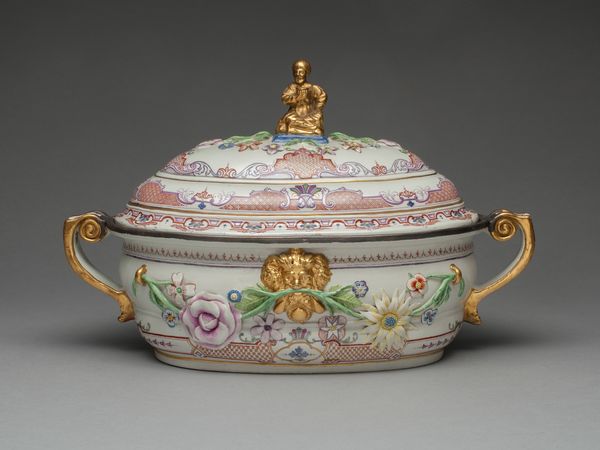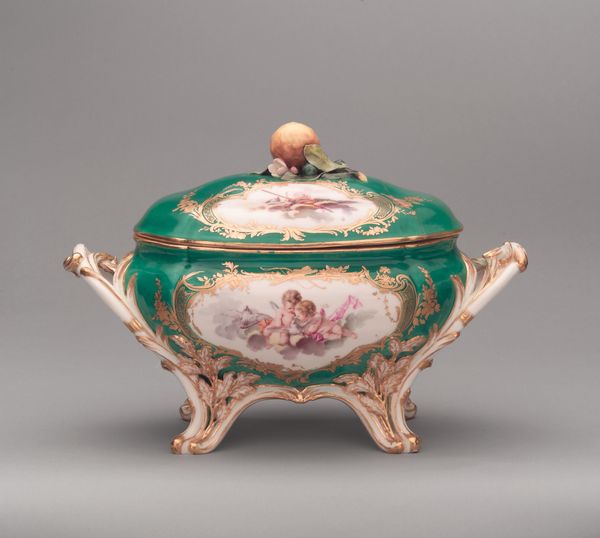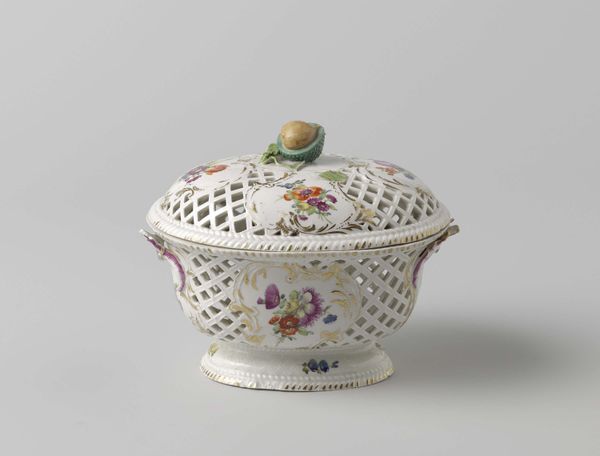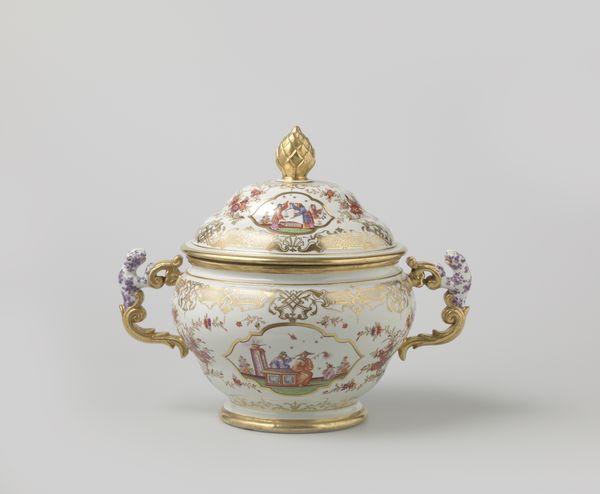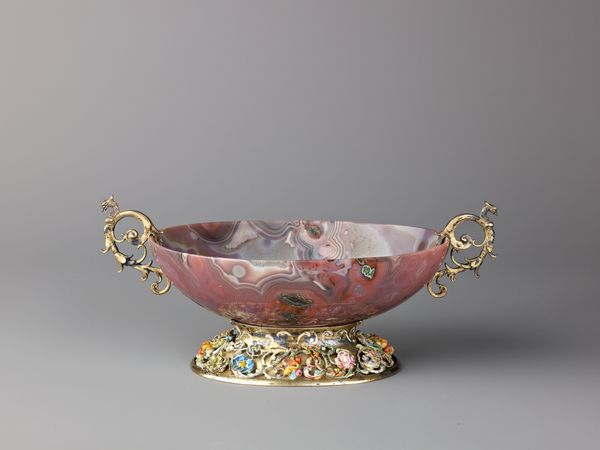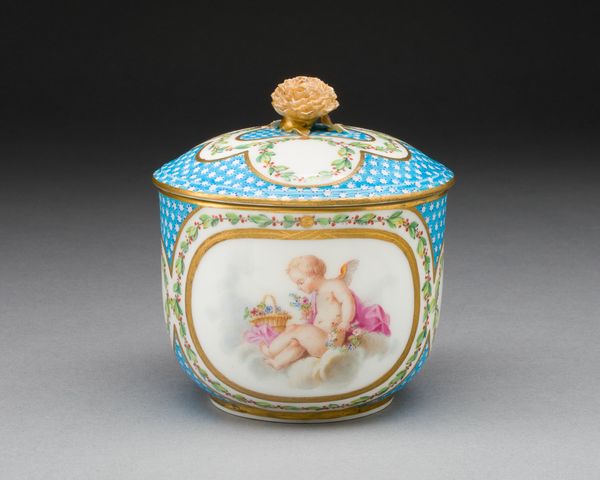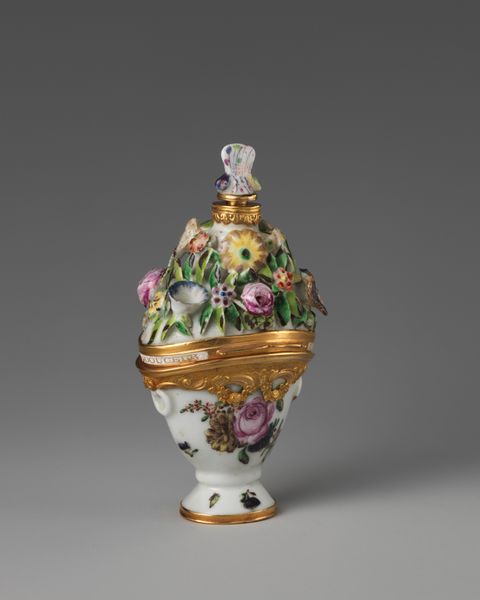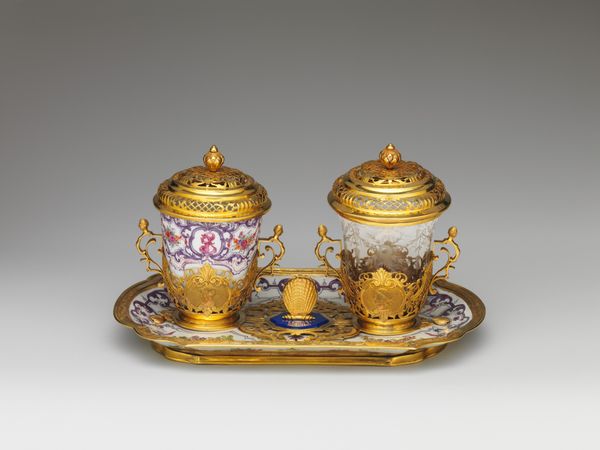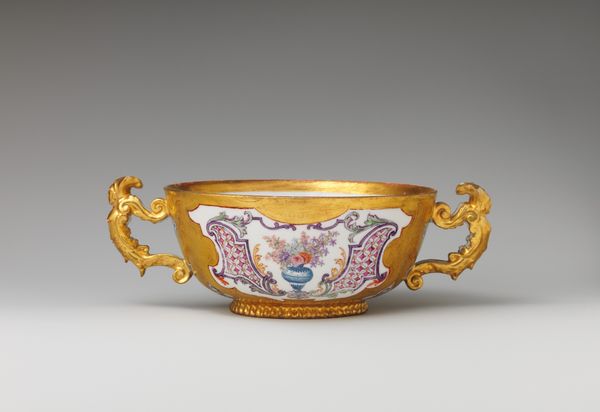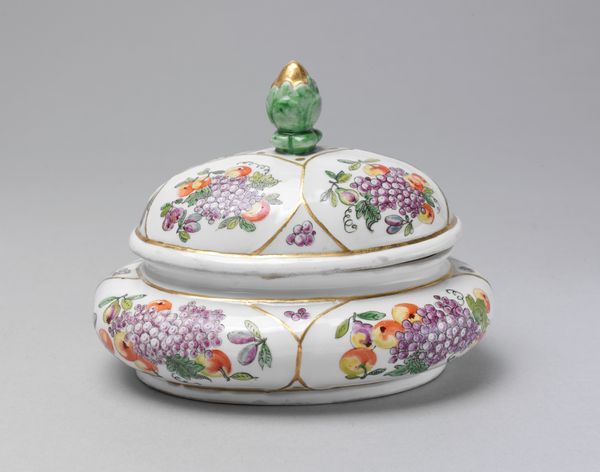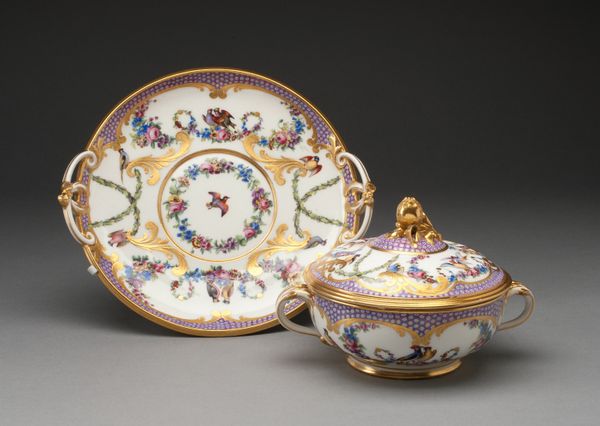
mixed-media, carving, metal, gold, guilding, sculpture
#
mixed-media
#
carving
#
metal
#
gold
#
guilding
#
mannerism
#
11_renaissance
#
sculpture
#
decorative-art
Dimensions: 6 1/4 × 6 11/16 × 4 3/16 in. (15.88 × 17 × 10.64 cm)
Copyright: Public Domain
This Turban snail shell cup was made by an anonymous artist using a nautilus shell, gold, and precious stones. Cups such as this one were made in Europe during the Renaissance, a period when artists and patrons looked to classical antiquity for inspiration. Drinking vessels made of precious materials were a sign of wealth, status, and refined taste. The inscription around the rim and the inclusion of semi-precious stones speak to the patron’s humanist learning. But this cup also tells us about early modern globalization. Objects made of exotic materials signaled a patron’s access to far-flung corners of the world. The turban snail used to create this cup originated in the Indian Ocean and made its way to Europe through colonial trade routes controlled by Portugal, Spain, and the Netherlands. Historians of art and material culture use archival sources, scientific analyses, and postcolonial theory to shed light on objects like this, revealing the complex social worlds in which they were made and used.
Comments
minneapolisinstituteofart almost 2 years ago
⋮
Travel, trade and scientific discoveries in the sixteenth and seventeenth centuries gave rise to a new type of collecting in which curiosities of nature and man-made works of art and science were gathered together by princes and wealthy connoisseurs in cabinets of curiosities which referred to both cabinets as well as one or more rooms. Hybrid objects, such as this turban snail shell cup were especially prized for the marriage of nature and art.
Join the conversation
Join millions of artists and users on Artera today and experience the ultimate creative platform.

